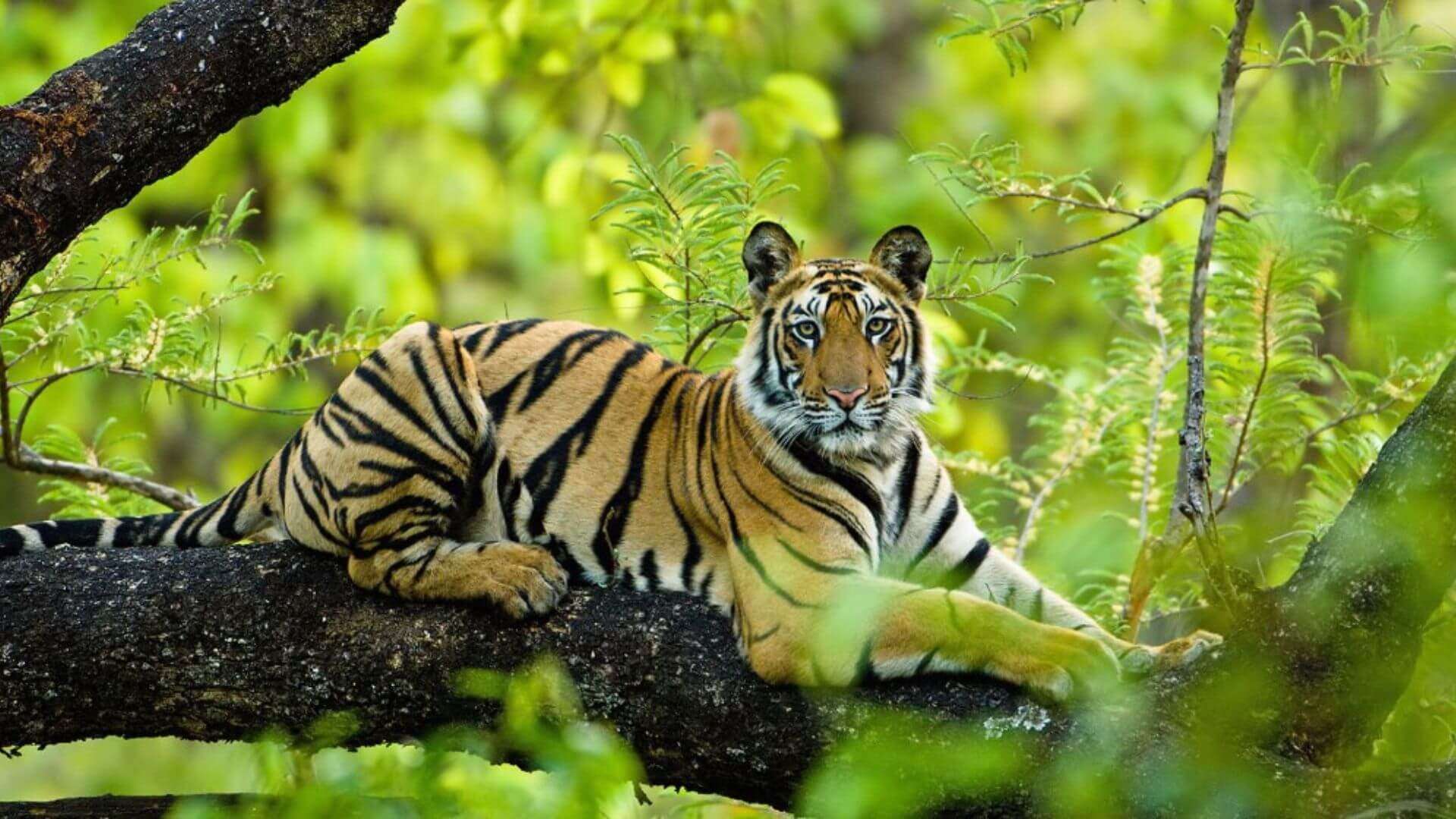India’s diverse landscape is home to an incredible array of wildlife, making it a top destination for nature enthusiasts seeking a thrilling safari experience. With numerous national parks and wildlife reserves spread across the country, each offering a unique ecosystem and a chance to spot elusive wildlife, India promises an unforgettable adventure for wildlife lovers.
Tiger safari is very popular among tourists in India. Indian national parks boast a high density of tigers. Wildlife lovers love to hunt tigers in their natural habitat. A tiger safari is an ideal way to visit their den and observe their actions. Tiger safaris can be done by sitting on the backs of tigers or by driving through the jungles in an open jeep.
Tiger safari is very popular in Ranthambhor National Park, Jim Corbett National Park, Kanha National Park, Sariska Tiger Reserve, and other parks with high concentrations of tigers. Elephant safari is also one of the popular options to enjoy the adventures of wildlife tourism and safari in India.
Elephant safaris can be taken to travel both in the bustling game parks and in the bustling cities of India. Kaziranga National Park, Periyar National Park, Kanha National Park, etc. are the ideal places where you can enjoy elephant riding. Elephant safari is very famous in Jaipur. You can hire an elephant near the Birla Temple and walk to the Amber Fort for a complete elephant safari experience. You can also take a tour of the city sitting on the back of an elephant.
Ranthambore National Park, Rajasthan: Exploring the Realm of the Royal Bengal Tigers
Ranthambore National Park, located in the state of Rajasthan, India, is a crown jewel when it comes to wildlife tourism. Renowned for its population of majestic Royal Bengal tigers, this iconic national park attracts wildlife enthusiasts, photographers, and nature lovers from around the world. Covering an area of approximately 1,334 square kilometers, Ranthambore is situated in the eastern part of Rajasthan, near the town of Sawai Madhopur.

Wildlife and Biodiversity: The park’s diverse landscape includes dry deciduous forests, open grasslands, rocky outcrops, and picturesque lakes, providing an ideal habitat for a wide variety of wildlife. Apart from the famous Bengal tigers, Ranthambore is home to leopards, striped hyenas, jackals, sloth bears, wild boars, and Indian foxes. The park also shelters a rich assortment of avian species, making it a haven for birdwatchers. The lakes within the park attract numerous migratory birds during the winter months, adding to the avian biodiversity.
The Tiger Safari Experience: One of the main attractions of Ranthambore is the thrilling tiger safari experience. The park offers two types of safaris: jeep safaris and canter safaris. Jeep safaris are ideal for small groups and provide a more personalized and intimate experience, allowing visitors to venture into the core areas of the park. Canter safaris, on the other hand, are larger open-air vehicles that can accommodate more people and offer a shared safari experience.
The excitement of spotting a tiger in its natural habitat is an unforgettable experience. The park is divided into different zones, and each zone has its own resident tigers. Some of the well-known tigers of Ranthambore, like Machali, T-24 (Ustad), and T-19 (Krishna), have become legends due to their fascinating behavior and interactions with visitors over the years.
Best Time to Visit: Ranthambore National Park is open for visitors from October to June, with the park remaining closed during the monsoon season from July to September. The best time to visit is during the cooler months from November to February when the weather is pleasant and wildlife sightings are more frequent as the animals come out in search of water.
Conservation Efforts: Ranthambore’s success in tiger conservation can be attributed to the dedicated efforts of the forest department, local communities, and conservation organizations. Strict anti-poaching measures and habitat conservation initiatives have contributed to an increase in the tiger population within the park.
Accommodation and Accessibility: Sawai Madhopur serves as the gateway to Ranthambore National Park, and it is well-connected by road and rail. The town offers a range of accommodation options, including luxury resorts, wildlife lodges, and budget hotels, providing visitors with various choices based on their preferences and budgets.
A Glimpse of Royalty in the Wild: A visit to Ranthambore National Park is not only about spotting tigers but also an opportunity to immerse oneself in the natural beauty of the landscape and witness the diverse flora and fauna of the region. The combination of thrilling wildlife encounters, the rich history of the Ranthambore Fort, and the scenic landscapes make Ranthambore a must-visit destination for anyone seeking an authentic safari experience in India.
Jim Corbett National Park, Uttarakhand: Where the Wild Roams Free
Jim Corbett National Park, situated in the picturesque state of Uttarakhand, is India’s oldest and one of its most renowned national parks. Named after the legendary British hunter turned conservationist Jim Corbett, this park is a treasure trove of wildlife and natural beauty. Established in 1936 as Hailey National Park, it was later renamed in honor of the man who played a significant role in the conservation of the Bengal tiger and other wildlife species.
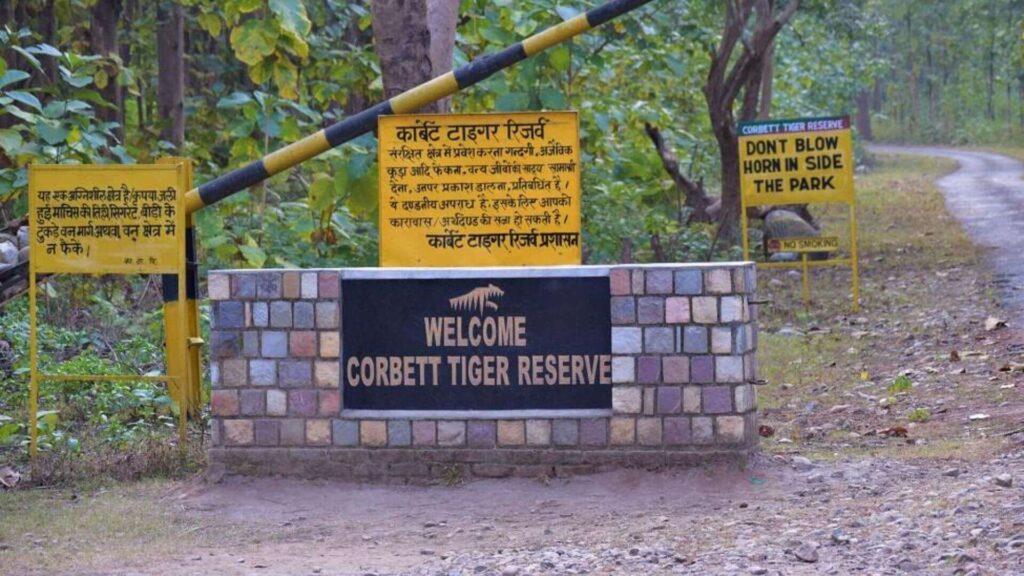
Rich Biodiversity: Encompassing an area of around 1,318 square kilometers, Jim Corbett National Park is spread across the Himalayan foothills and the Shivalik mountain range. Its diverse landscape comprises lush grasslands, dense Sal forests, rivers, and hilly terrain. The park is home to an impressive array of wildlife, including the majestic Bengal tiger, Asian elephants, leopards, sloth bears, Indian antelopes (Nilgai), wild boars, and numerous bird species. The Ramganga River flowing through the park adds to its charm, providing a vital water source for the animals.
The Tiger Territory: Jim Corbett National Park is celebrated for its tiger population, and it has been an important sanctuary for the conservation of this endangered species. Tigers roam freely within the park, making it an ideal destination for tiger safari enthusiasts. The elusive nature of these big cats adds an element of thrill and excitement to the safari experience.
Safari Experience: The park offers various safari options to explore its wilderness. Jeep safaris are a popular choice, as they provide visitors with the opportunity to venture into the heart of the forest and increase the chances of wildlife sightings. Additionally, elephant safaris offer a unique perspective, allowing travelers to traverse areas inaccessible to vehicles and observe wildlife from a close distance. Dhikala, Bijrani, Jhirna, and Durga Devi are some of the prominent zones within the park, each offering a distinct safari experience.
Birdwatcher’s Paradise: Jim Corbett National Park is a paradise for birdwatchers, with over 600 bird species recorded here. From majestic raptors like the crested serpent eagle and the changeable hawk-eagle to colorful varieties like the Indian pitta and the scarlet minivet, the park offers a delightful treat for bird enthusiasts.
Best Time to Visit: The park remains open from mid-November to mid-June, with the monsoon season being the only time it is closed for visitors. The best time to visit is during the winter months (November to February), as the weather is pleasant and wildlife sightings are more frequent.
Conservation Efforts: The conservation efforts at Jim Corbett National Park are directed towards maintaining a delicate balance between preserving the wildlife and providing livelihood opportunities to the surrounding communities. The park authorities and local communities work together to ensure the sustainable conservation of its natural resources.
Accommodation and Accessibility: The town of Ramnagar serves as the main gateway to Jim Corbett National Park. It is well-connected by road and rail to major cities like Delhi and Dehradun. The park offers various accommodation options, ranging from luxury resorts and forest lodges to budget hotels and guesthouses, catering to the diverse needs of travelers.
A Wilderness Retreat: For nature lovers, wildlife enthusiasts, and adventure seekers, a visit to Jim Corbett National Park offers a chance to escape into the lap of nature and witness the untamed beauty of the wild. The sight of a tiger prowling through the dense foliage or an elephant herd bathing in the river is an experience that leaves a lasting impression and beckons visitors back to this haven of wilderness time and again.
Kaziranga National Park, Assam: Where the Wild Rhinos Roam
Kaziranga National Park, located in the northeastern state of Assam, India, is a UNESCO World Heritage Site and one of the most significant wildlife conservation areas in the world. Spread over an area of approximately 430 square kilometers, the park is nestled in the fertile floodplains of the Brahmaputra River and is renowned for its conservation efforts in safeguarding the endangered one-horned Indian rhinoceros.

A Rhino Haven: Kaziranga is home to the largest population of the one-horned rhinoceros in the world. With its undulating grasslands, dense tropical forests, and numerous shallow lakes and ponds, the park provides an ideal habitat for these magnificent creatures. The one-horned rhinos, along with other inhabitants such as wild elephants, wild water buffaloes, swamp deer (barasingha), and tigers, thrive in this unique ecosystem.
Wildlife and Avifauna: Apart from the rhinos, Kaziranga National Park boasts a rich variety of wildlife. The park is a birdwatcher’s paradise, with over 500 bird species recorded here. The Bengal florican, great Indian hornbill, and various species of eagles, vultures, and waterfowl are among the avian delights that attract bird enthusiasts from across the globe.
Boat and Jeep Safaris: To explore the diverse terrain and wildlife of Kaziranga, the park offers both boat safaris and jeep safaris. Boat safaris take visitors along the Brahmaputra River and through the marshes, providing an opportunity to observe aquatic animals and an array of birdlife. Jeep safaris, on the other hand, take visitors deeper into the grasslands and forests, offering a chance to spot rhinos, elephants, tigers, and other wildlife up close.
Conservation Success: Kaziranga National Park’s success in conserving the Indian rhinoceros can be attributed to the efforts of the Assam Forest Department, wildlife conservationists, and local communities. Strict anti-poaching measures and vigilant monitoring have resulted in the steady growth of the rhino population, making Kaziranga a model for successful wildlife conservation worldwide.
Best Time to Visit: The park remains open for visitors from November to April. The winter months (November to February) are considered the best time to visit, as the weather is pleasant, and wildlife sightings are more frequent. However, the park is closed during the monsoon season (June to October) due to heavy rainfall and flooding.
Cultural and Ethnic Heritage: Apart from its natural wonders, Kaziranga National Park is also known for its cultural and ethnic diversity. The region is inhabited by various indigenous communities, including the Mishing, Karbi, and Bodo tribes. Visitors have the opportunity to explore and experience the local culture, traditions, and cuisine.
Accommodation and Accessibility: The nearest major town to Kaziranga National Park is Jorhat, located approximately 96 kilometers away. The park has various accommodation options, ranging from luxury resorts to eco-lodges and forest rest houses, providing visitors with an immersive experience amidst the wilderness.
A Living Testament to Conservation: Kaziranga National Park stands as a living testament to the success of conservation efforts in preserving endangered species and their habitats. A visit to this extraordinary park offers a rare opportunity to witness the splendor of the one-horned rhinoceros and other captivating wildlife, leaving visitors with a deep appreciation for nature’s beauty and the importance of protecting it for future generations.
Bandhavgarh National Park, Madhya Pradesh: Unraveling the Mysteries of the Tiger’s Lair
Nestled in the heart of Madhya Pradesh, Bandhavgarh National Park is a gem among India’s wildlife destinations. Renowned for its high density of Bengal tigers, the park offers a mesmerizing safari experience for nature enthusiasts, photographers, and wildlife lovers alike. Spread over an area of approximately 450 square kilometers, Bandhavgarh is not just a sanctuary for tigers but also a haven for diverse flora and fauna.
The Royal Bengal Tigers: Bandhavgarh is celebrated for its impressive population of Royal Bengal tigers, which roam freely in its lush forests and open grasslands. The park has one of the highest tiger densities in India, making it an excellent place to spot these majestic big cats. The white tigers of Rewa, once captured here, have become a legendary part of the park’s history.
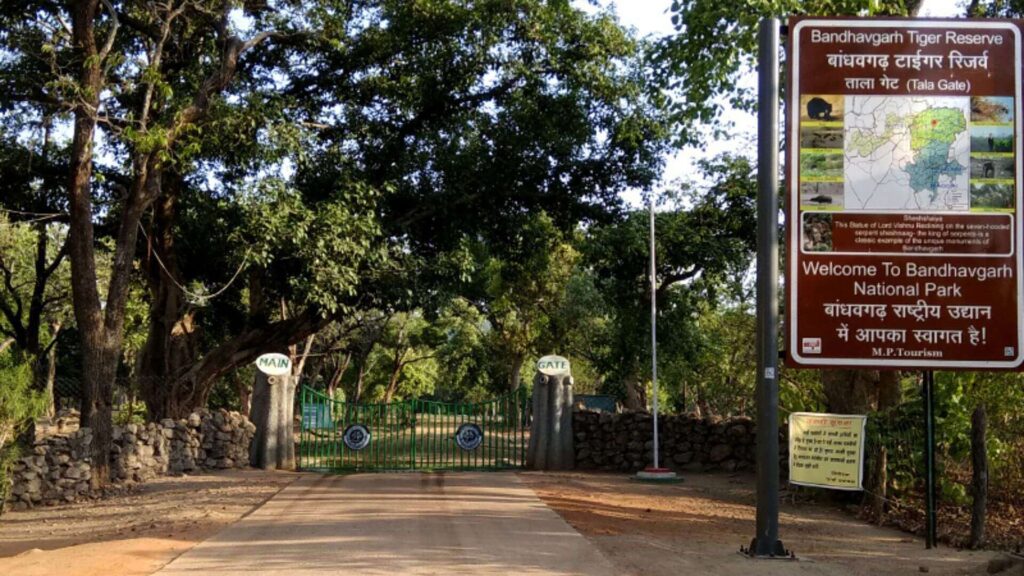
Wildlife and Biodiversity: Apart from tigers, Bandhavgarh National Park hosts a variety of wildlife species. Leopards, Indian bison (gaur), spotted deer (chital), sambar deer, wild boars, and Indian foxes are among the many inhabitants of the park. Additionally, Bandhavgarh is a paradise for birdwatchers, with over 250 bird species, including various eagles, owls, vultures, and migratory birds.
Safari Experience: Bandhavgarh offers thrilling jeep safaris and canter safaris, allowing visitors to explore the diverse terrain and wildlife of the park. The jeep safaris are ideal for small groups and provide a more personalized experience, while canter safaris cater to larger groups. The park is divided into different zones, and each zone has its own unique charm and potential for wildlife sightings.
Historical Significance: Bandhavgarh National Park holds historical and mythological significance, dating back to ancient times. The park gets its name from the Bandhavgarh Fort, located within its premises. Legends suggest that Lord Rama gifted this fort to his brother Lakshmana, and it is believed that parts of the Ramayana were written here. The fort’s ruins add a touch of mystery and allure to the park’s landscape.
Best Time to Visit: The park remains open for visitors from October to June, and the best time to visit is during the winter months (November to February). The weather is pleasant, and wildlife sightings are more frequent as the animals venture out in search of water. The park is closed during the monsoon season (July to September) due to heavy rainfall.
Conservation Efforts: Bandhavgarh National Park’s conservation efforts focus on safeguarding the habitat of tigers and other wildlife. Strict anti-poaching measures, habitat restoration, and community involvement play a vital role in the park’s conservation success.
Accommodation and Accessibility: The nearest town to Bandhavgarh National Park is Umaria, located around 35 kilometers away. The park has a range of accommodation options, including luxury resorts, wildlife lodges, and budget hotels, providing visitors with comfortable stay choices.
A Wild Journey of Discovery: Bandhavgarh National Park offers visitors a thrilling and immersive experience, where they can witness the raw beauty of nature and the magnificent Royal Bengal tigers in their natural habitat. Exploring the park’s diverse landscapes, encountering rare wildlife, and delving into its rich history make Bandhavgarh an unforgettable journey of discovery and a must-visit destination for every wildlife enthusiast.
Kanha National Park, Madhya Pradesh: Journey into the Land of Mowgli and the Jungle Book
Kanha National Park, located in the state of Madhya Pradesh, India, is not only one of the largest national parks in the country but also one of the most enchanting and biodiverse. With its vast expanses of Sal forests, open meadows, and lush bamboo groves, Kanha’s landscape served as the inspiration for Rudyard Kipling’s classic novel, “The Jungle Book.” This literary connection adds an element of magic and allure to the park, drawing visitors from all over the world to explore the wilds of Mowgli’s land.
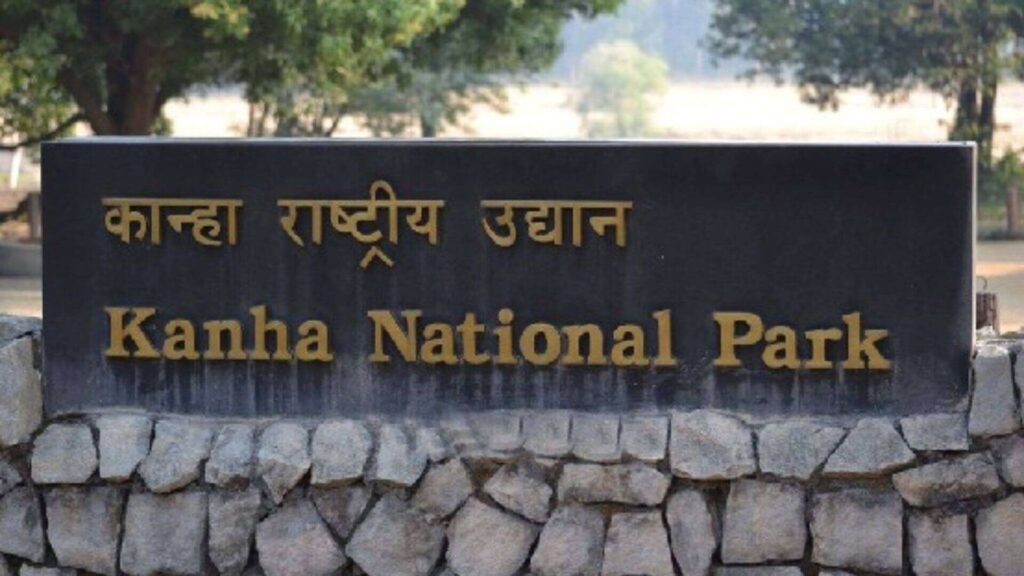
Biodiversity and Wildlife: Kanha National Park is a haven for an incredible variety of flora and fauna. The park’s diverse habitats support a healthy population of Bengal tigers, making it one of the best places in India to spot these elusive big cats. Apart from tigers, the park is home to leopards, Indian wild dogs (dholes), Indian bison (gaur), spotted deer (chital), sambar deer, barasingha (hard-ground swamp deer), and more. The barasingha, in particular, is unique to Kanha and was once on the brink of extinction. Thanks to conservation efforts, their numbers have rebounded, making Kanha a vital stronghold for their survival.
The Jungle Book Connection: The forests of Kanha provided the inspiration for Rudyard Kipling’s iconic novel, “The Jungle Book.” The characters in the book, such as Mowgli, Baloo the bear, Bagheera the panther, and Sher Khan the tiger, are believed to be inspired by the diverse wildlife found in Kanha’s jungles. As visitors explore the park, they can’t help but feel a sense of wonder and nostalgia as they venture into the world immortalized by Kipling’s storytelling.
Safari Experience: Kanha National Park offers both jeep safaris and elephant safaris for visitors to explore its wilderness. Jeep safaris allow travelers to cover larger areas of the park and have a higher chance of spotting tigers and other wildlife. Elephant safaris, on the other hand, offer a unique vantage point, allowing visitors to venture into areas that are otherwise inaccessible and observe wildlife from close quarters.
Best Time to Visit: The park remains open for visitors from October to June, with the best time to visit in the winter months (November to February). During this time, the weather is pleasant, and wildlife sightings are more frequent as animals come out in search of water. The park remains closed during the monsoon season (July to September) due to heavy rainfall.
Conservation Efforts: Kanha National Park has been at the forefront of wildlife conservation in India. Conservation initiatives, including anti-poaching measures, habitat restoration, and community involvement, have led to the park’s success in protecting its diverse wildlife and ensuring the sustainability of the ecosystem.
Accommodation and Accessibility: The main gateway to Kanha National Park is the town of Mandla, located approximately 32 kilometers away. The park offers a range of accommodation options, from luxury lodges and resorts to budget-friendly guesthouses, providing visitors with comfortable and immersive stays.
A Wilderness Odyssey: A visit to Kanha National Park is not just a safari experience; it’s an odyssey into the enchanting world of wildlife, nature, and the mythical tales of “The Jungle Book.” As visitors traverse the forests, meadows, and water bodies, they become part of the magical realm that has captivated the imaginations of generations, leaving them with indelible memories of the untamed beauty and harmony of nature.
Tadoba Andhari Tiger Reserve, Maharashtra: Where the Wilderness Roars
Tadoba Andhari Tiger Reserve, situated in the state of Maharashtra, India, is a flourishing haven for wildlife enthusiasts and nature lovers. Covering an area of around 1,727 square kilometers, this reserve is named after the Tadoba Lake and the Andhari River that flow through it. Tadoba is celebrated for its high tiger density, making it one of the top destinations in India for tiger sightings and wildlife safaris.
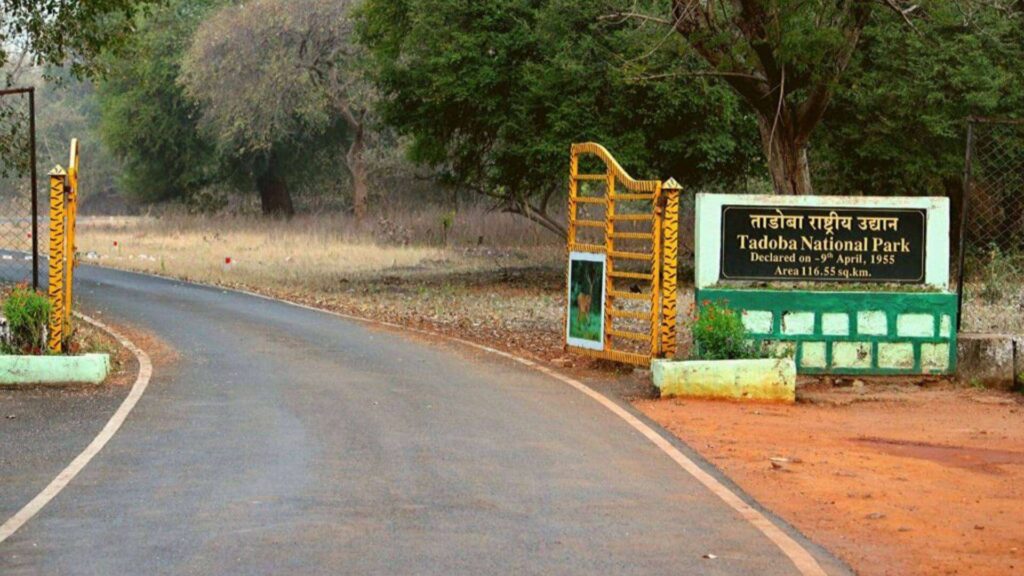
Tiger Territory: Tadoba Andhari Tiger Reserve is famed for its healthy population of Bengal tigers, providing visitors with a good chance of spotting these majestic big cats. The reserve’s dense forests and open grasslands create an ideal habitat for tigers, leopards, and other wildlife species. Tadoba’s tigers are known for their impressive size and are often the highlight of visitors’ safaris.
Wildlife and Avian Diversity: Apart from tigers, Tadoba is home to a diverse range of wildlife, including Indian leopards, Indian bison (gaur), sloth bears, wild dogs (dholes), striped hyenas, and various deer species like spotted deer (chital) and sambar deer. The reserve is also a paradise for birdwatchers, with over 280 bird species, including the crested serpent eagle, Indian pitta, and the paradise flycatcher.
Safari Experience: Tadoba Andhari Tiger Reserve offers both jeep safaris and canter safaris for visitors to explore its wilderness. Jeep safaris are popular for small groups and families, allowing for a more intimate experience with the wildlife. Canter safaris cater to larger groups and provide a shared safari experience.
Unique Landscape: The reserve’s landscape is characterized by thick forests, rolling hills, and picturesque meadows, creating a diverse ecosystem that supports a wide range of flora and fauna. The Tadoba Lake and the Andhari River, along with other smaller water bodies, act as vital water sources for wildlife, making them prime spots for animal sightings.
Best Time to Visit: Tadoba Andhari Tiger Reserve remains open from October to June, with the winter months (November to February) being the best time to visit. The weather is pleasant during this period, and wildlife sightings are more frequent as the animals come out to bask in the winter sun. The reserve is closed during the monsoon season (July to September) due to heavy rainfall.
Conservation Efforts: Tadoba Andhari Tiger Reserve has undertaken commendable efforts in tiger conservation, habitat restoration, and community involvement. The reserve authorities work closely with local communities to ensure the well-being of both wildlife and people living around the park.
Accommodation and Accessibility: The main entry point to Tadoba Andhari Tiger Reserve is the town of Chandrapur, which is well-connected by road and rail. The reserve offers a range of accommodation options, including forest lodges, luxury resorts, and budget hotels, providing visitors with a comfortable and immersive stay amidst nature.
A Journey into the Wild: A visit to Tadoba Andhari Tiger Reserve offers a thrilling journey into the untamed wilderness, where the roars of the tigers echo through the forests and the wildlife thrives in harmony. As visitors embark on safaris through the reserve, they are enveloped by the beauty and serenity of nature, creating memories that will last a lifetime. Tadoba promises an unforgettable wildlife experience and a deep appreciation for the conservation efforts that protect these magnificent creatures and their natural habitat.
Periyar Wildlife Sanctuary, Kerala: Where Nature and Wildlife Unite
Periyar Wildlife Sanctuary, located in the lush Western Ghats of Kerala, South India, is a verdant paradise that beckons nature enthusiasts and wildlife lovers alike. Nestled in the Idukki and Pathanamthitta districts, this sanctuary is renowned for its picturesque landscapes, diverse flora, and an array of wildlife, including the majestic Indian elephant and the elusive Bengal tiger.
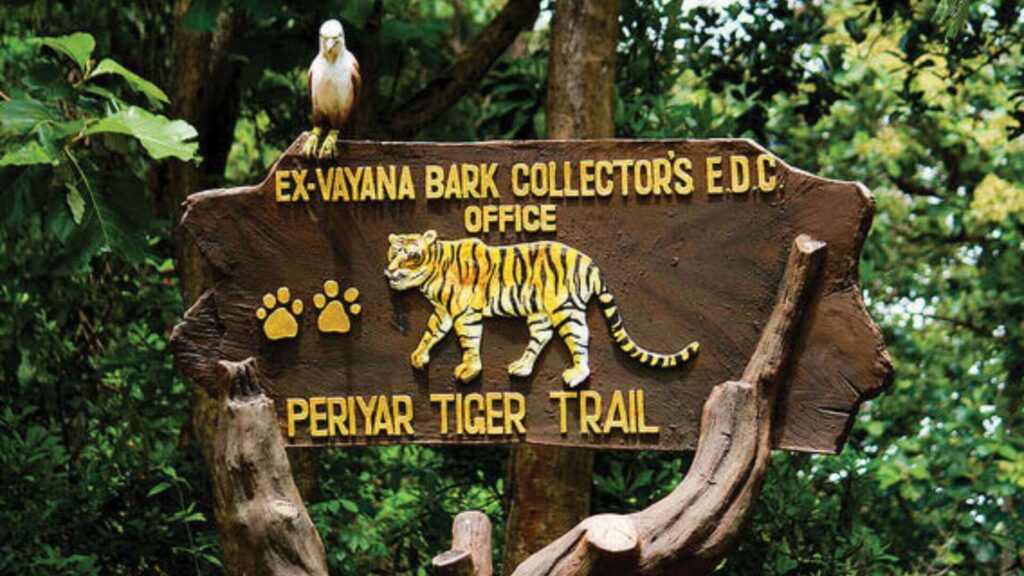
Wildlife Diversity: The centerpiece of Periyar Wildlife Sanctuary is the Periyar Lake, a vast water body formed by the construction of the Mullaperiyar Dam. The lake provides a perennial source of water for the park’s inhabitants, making it an ideal place for wildlife sightings, especially during the dry season. Elephants, sambar deer, Indian bison (gaur), wild boars, and various species of monkeys are among the commonly spotted wildlife in the sanctuary.
The Tiger and Other Predators: Periyar is also home to a population of Bengal tigers, although sightings are relatively rare due to the dense vegetation. The elusive leopards and wild dogs (dholes) also add to the diversity of predators found in the sanctuary.
Boat Safaris on Periyar Lake: One of the unique features of Periyar Wildlife Sanctuary is the boat safari on the serene Periyar Lake. The boat cruises allow visitors to observe wildlife from the water’s edge, providing a chance to witness animals coming to the lake for drinking and bathing. The boat safaris are popular for birdwatching too, with numerous waterfowl and migratory bird species being spotted during the winter months.
Trekking and Nature Walks: Apart from boat safaris, the sanctuary offers guided trekking and nature walks through the dense forests, offering a closer look at the rich biodiversity and the intriguing ecosystems of the Western Ghats. These walks provide a more intimate experience with the flora and fauna and an opportunity to learn about the intricate balance of nature.
Best Time to Visit: Periyar Wildlife Sanctuary is open for visitors throughout the year, but the best time to visit is during the drier months from October to February. The weather is pleasant, and wildlife sightings are more frequent as animals gather around water sources.
Community-Based Conservation: Periyar Wildlife Sanctuary is an excellent example of community-based conservation. The local communities, especially the Mannan tribe, have been actively involved in conservation efforts and have become key partners in protecting the sanctuary’s wildlife and environment.
Accommodation and Accessibility: The town of Kumily, located near the sanctuary, serves as the base for visitors. The sanctuary offers various accommodation options, including eco-lodges and resorts, ensuring a comfortable stay close to nature.
A Tapestry of Natural Beauty: A visit to Periyar Wildlife Sanctuary is a journey into the heart of nature, where the wilderness flourishes, and the sights and sounds of the wild blend harmoniously. The sanctuary’s picturesque landscapes, abundant wildlife, and the peaceful Periyar Lake create a tapestry of natural beauty that leaves a lasting impression on every visitor. Periyar offers an authentic and enriching wildlife experience, making it a must-visit destination for anyone seeking a rendezvous with nature in “God’s Own Country” – Kerala.
Sundarbans National Park, West Bengal: Exploring the Enchanting Mangrove Wilderness
Sundarbans National Park, located in the delta of the Ganges, Brahmaputra, and Meghna rivers, is a UNESCO World Heritage Site and one of the most unique and captivating ecosystems on the planet. Spread across the states of West Bengal in India and Bangladesh, the Sundarbans is the world’s largest mangrove forest and a sanctuary for the magnificent Royal Bengal tiger, as well as a variety of other wildlife.

Mangrove Wonderland: The Sundarbans is a vast network of tidal waterways, mudflats, and islands covered with dense mangrove forests, which are adapted to thrive in saline conditions. The intertwining roots of the mangrove trees create a labyrinthine maze, forming a unique habitat that supports a rich diversity of plant and animal life.
Wildlife and the Royal Bengal Tiger: Sundarbans National Park is famous for its population of the Royal Bengal tiger, a unique subspecies known for its adaptation to the mangrove environment. The park is also home to other predators like saltwater crocodiles, fishing cats, and spotted deer. Additionally, it houses various bird species, including the kingfisher, herons, and white-bellied sea eagles.
Boat Safaris: Due to the marshy and waterlogged terrain, the primary mode of exploration in Sundarbans National Park is through boat safaris. The boat cruises take visitors through the narrow channels and creeks, providing a thrilling experience of navigating through the mangrove forest. During the safaris, travelers may spot various wildlife species, especially along the riverbanks and mudflats.
Tiger Tracking and Wildlife Encounters: Tiger tracking is a unique experience in Sundarbans, where trained guides and forest officials accompany visitors on boat safaris to track the elusive Bengal tiger. Though tiger sightings are rare and challenging, the adventure and excitement of being in the tiger’s territory make it an unforgettable experience.
Conservation Efforts: The Sundarbans are vulnerable to climate change and natural disasters like cyclones and rising sea levels. Conservation efforts focus on protecting the mangrove ecosystem, wildlife, and the livelihoods of the local communities. The park’s status as a UNESCO World Heritage Site has helped raise awareness and promote sustainable conservation practices.
Best Time to Visit: The best time to visit Sundarbans National Park is during the winter months from November to February when the weather is pleasant, and wildlife sightings are more frequent.
Accommodation and Accessibility: The entry point to Sundarbans National Park is through the town of Sonakhali, which is well-connected to Kolkata, the capital city of West Bengal. The park offers basic accommodation options, including forest rest houses and eco-lodges, allowing visitors to immerse themselves in the wilderness.
A Journey into the Wild Mangroves: A visit to Sundarbans National Park is a journey into a mystical and enchanting world where the mangrove forest meets the river and the land merges with the sea. Exploring this unique ecosystem, witnessing the elusive Royal Bengal tiger, and encountering the diverse wildlife make Sundarbans an extraordinary experience for nature enthusiasts seeking to unravel the mysteries of the mangrove wilderness.
Conclusion
In conclusion, India offers a plethora of thrilling safari experiences for wildlife enthusiasts and nature lovers. From the regal Bengal tigers of Ranthambore National Park to the enchanting wilderness of Periyar Wildlife Sanctuary in Kerala, each national park showcases a diverse range of flora and fauna, creating an unforgettable adventure for visitors.
The mystical landscapes of Jim Corbett National Park, the inspiration behind “The Jungle Book,” and the historical significance of Bandhavgarh National Park, named after the ancient fort within its boundaries, add an extra layer of fascination to these wildlife destinations. Meanwhile, Kaziranga National Park stands as a symbol of successful conservation efforts, protecting the endangered one-horned rhinoceros.
Venturing into the heart of Tadoba Andhari Tiger Reserve in Maharashtra and Kanha National Park in Madhya Pradesh, visitors can immerse themselves in the untamed beauty of nature, encountering not only tigers but also a diverse array of wildlife and avian species.
Lastly, the Sundarbans National Park in West Bengal offers a unique and ethereal experience in the world’s largest mangrove forest, where boat safaris and tiger tracking provide a rare glimpse into the life of the elusive Bengal tiger.
Throughout these articles, one common thread emerges – a commitment to wildlife conservation. Each national park showcases dedicated efforts to protect and preserve its unique ecosystems, ensuring the sustainability of its precious flora and fauna. Responsible tourism and community involvement play crucial roles in these conservation initiatives, making each safari experience an ethically sound journey into the wild.
Whether it’s the roar of the Bengal tiger, the trumpeting of elephants, or the haunting calls of exotic birds, India’s safari destinations provide an opportunity to witness nature’s grandeur up close. From the vast grasslands to the dense forests and the tranquil waterways, India’s wildlife sanctuaries offer an unparalleled adventure, leaving visitors with lasting memories and a renewed appreciation for the wonders of the natural world.
